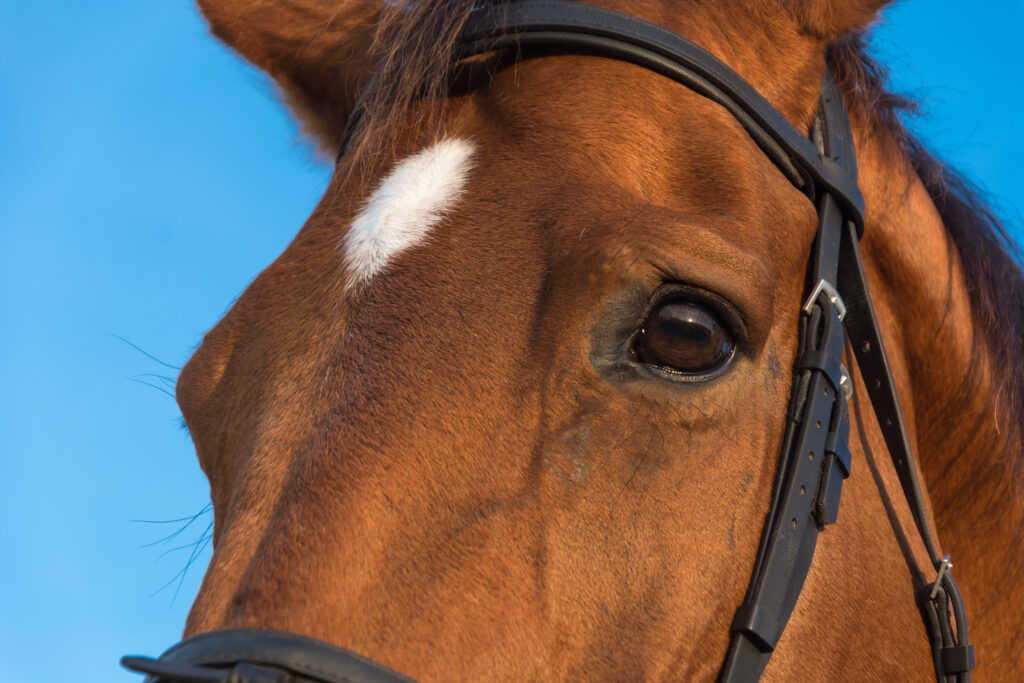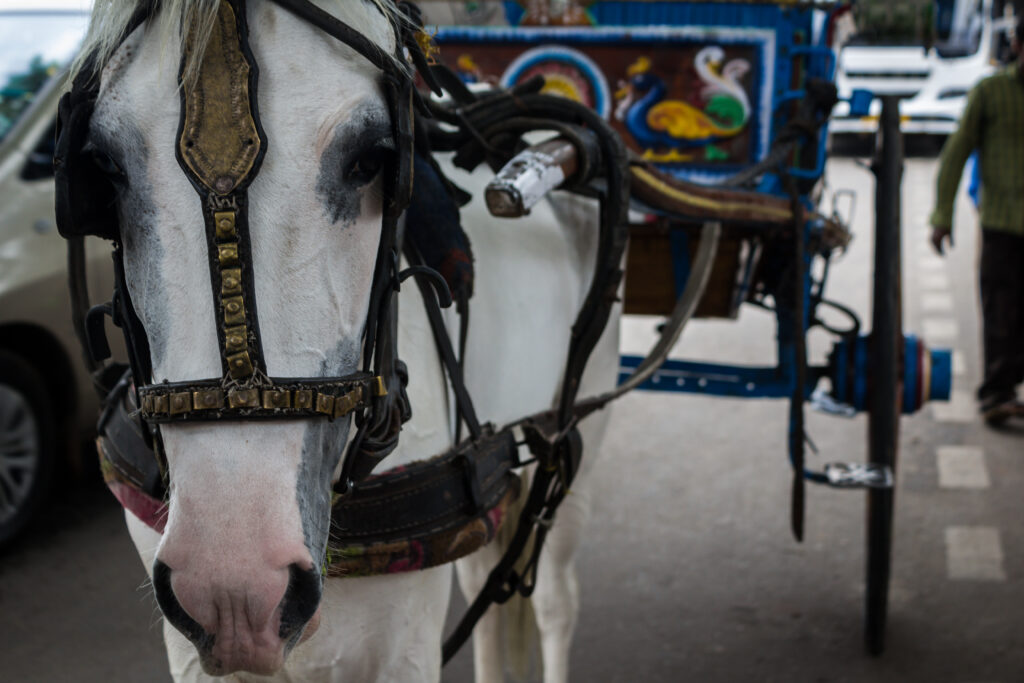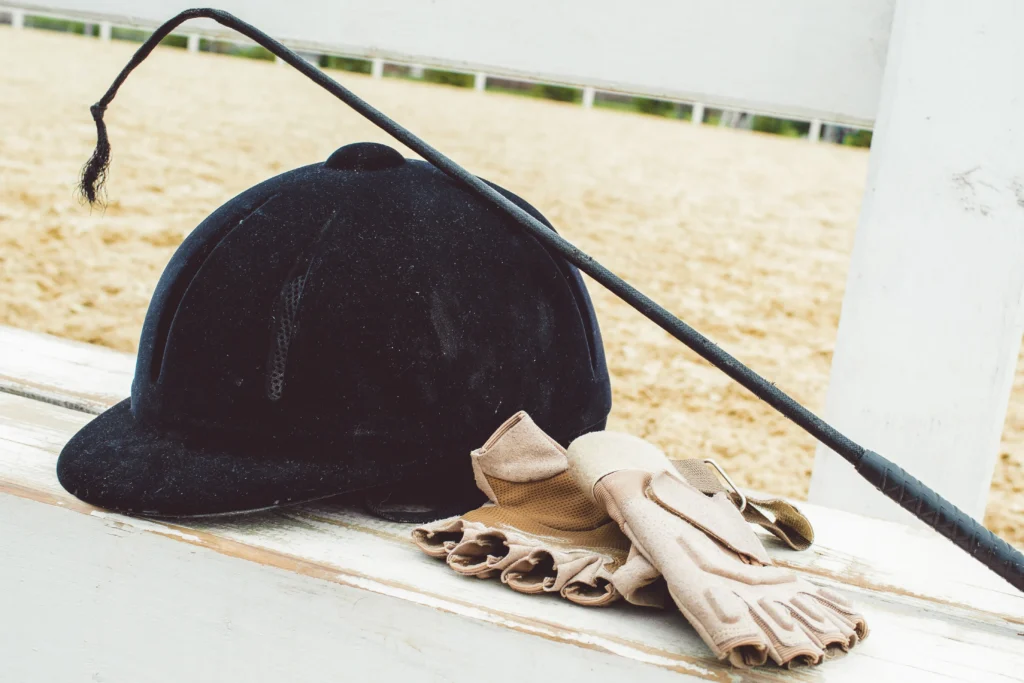When it comes to equine health, few factors are as critical yet misunderstood as average horse weight. As a horse owner or enthusiast, understanding the truth about horse weight can literally be a matter of life and death for your equine companion. The average weight of a horse isn’t just a number—it’s a vital health indicator that can prevent serious medical complications and ensure optimal performance.
Unfortunately, dangerous misconceptions about average horse weight continue to circulate among both novice and experienced horse owners. These myths don’t just lead to confusion—they can result in serious health consequences for your beloved equine partner.
In this comprehensive guide, we’ll demolish the 5 most dangerous myths about average horse weight and equip you with accurate, life-saving information to keep your horse in peak condition. We’ll explore how much does a horse weigh across different breeds, ages, and uses, and provide you with practical tools like a horse weight calculator and horse weight chart to monitor your equine companion’s health.

Why Understanding Average Horse Weight Is Critical
Before diving into the myths, let’s establish why average horse weight is so fundamental to equine health. A horse’s weight serves as a primary indicator of:
- Overall health status
- Nutritional adequacy
- Medication dosing requirements
- Work capacity and athletic potential
- Breeding readiness and reproductive health
Monitoring your horse’s weight isn’t just good practice—it’s essential preventative healthcare. Studies show that horses maintained at an optimal average weight live longer, healthier lives with fewer medical complications.
According to research from the American Association of Equine Practitioners, weight-related issues contribute to approximately 60% of all equine health problems. This statistic alone demonstrates why understanding the true average weight of a horse could save your equine companion’s life.
Now, let’s debunk those deadly myths that could be endangering your horse’s wellbeing.
Myth #1: All Adult Horses Should Weigh About the Same
Perhaps the most dangerous misconception about average horse weight is that there’s a single “normal” weight that applies to all adult horses. This couldn’t be further from the truth.
The Reality: Horse Weight Varies Dramatically by Breed
The average weight of a horse varies tremendously depending on breed, with differences of over 1,000 pounds between the lightest and heaviest breeds. Consider these variations in horse weight by breed:
- Miniature Horse: 200-350 pounds
- Arabian: 800-1,000 pounds
- Quarter horse weight: 1,000-1,300 pounds
- Thoroughbred horse weight: 1,000-1,200 pounds
- Warmblood: 1,200-1,400 pounds
- Percheron: 1,800-2,200 pounds
- Clydesdale horse weight: 1,800-2,300 pounds
As you can see, what’s a healthy average weight for one breed could indicate dangerous obesity or emaciation in another. That’s why breed-specific horse weight charts are essential tools for accurate health assessment.
At PetsPump’s guide to horse breed characteristics, you can find detailed information about different horse breeds and their healthy weight ranges.
The Danger of This Myth
Applying a one-size-fits-all approach to average horse weight can lead to serious health consequences. For example, feeding a lightweight breed like an Arabian the same amount as a draft horse could result in obesity, which increases the risk of:
- Laminitis
- Insulin resistance
- Joint problems
- Cardiovascular strain
- Reduced performance and stamina
Conversely, expecting a draft breed to maintain the average weight of a lighter breed could lead to dangerous underfeeding and malnutrition.
Myth #2: You Can Accurately Judge Horse Weight by Visual Inspection Alone
Many horse owners believe they can accurately assess their horse’s weight simply by looking at them. This dangerous myth persists despite overwhelming evidence to the contrary.
The Reality: Visual Assessment Is Highly Unreliable

Research published in the Equine Veterinary Journal found that even experienced horse owners and trainers typically misjudge their horses’ weight by 150-250 pounds when relying on visual assessment alone. That’s a significant enough error to impact medication dosing, feeding protocols, and overall health management.
The average weight of a horse cannot be determined accurately through visual inspection because:
- Fat distribution varies significantly between individual horses
- Winter coats can disguise body condition
- Different breeds carry weight differently
- Muscle mass and bone density contribute to weight but aren’t always visually apparent
The Danger of This Myth
Relying solely on visual assessment to determine horse weight can lead to:
- Dangerous medication overdosing or underdosing
- Inappropriate feed rations
- Failure to notice gradual weight loss that may indicate illness
- Delayed intervention in developing health conditions
Better Alternatives for Determining Average Horse Weight
Instead of eyeballing your horse’s weight, use one of these more accurate methods:
- Equine scales: The most accurate method for determining the weight of a horse
- Weight tapes: Provide a reasonable estimate of average horse weight when used correctly
- Horse weight calculator: Uses multiple body measurements for a more accurate estimate
- Body Condition Scoring system: A standardized method to assess fat coverage
For horses without access to a scale, the horse weight calculator formula can be surprisingly accurate:
Horse weight (lbs) = (heart girth in inches² × body length in inches) ÷ 330
Visit our comprehensive horse weight assessment guide for step-by-step instructions on using these methods.
Myth #3: A Horse’s Weight Doesn’t Change Much Once They Reach Adulthood
Many horse owners operate under the misconception that once a horse reaches maturity, their average weight remains relatively constant throughout adulthood.
The Reality: Adult Horse Weight Fluctuates Significantly
The truth is that adult horse weight can fluctuate by 5-10% seasonally and can change dramatically over the course of a horse’s lifetime due to various factors:
Seasonal Weight Variations
Most horses naturally gain weight in summer and lose weight in winter. This natural variation in average horse weight can amount to 50-100 pounds in a 1,000-pound horse. Research from the University of Minnesota shows that these seasonal fluctuations are normal adaptations to changing environmental conditions and food availability.
Performance and Training Impact
A horse’s training regimen significantly affects their average weight. As horse body weight shifts from fat to muscle during conditioning, the scale weight may not change much, but body composition changes dramatically. During intense training periods, careful monitoring of average horse weight becomes even more crucial.
Age-Related Weight Changes
The standard horse weight for an individual equine also changes with age:
- Young adults (4-10 years): Typically maintain stable weight with proper management
- Middle-aged horses (11-15 years): May begin to gain weight more easily as metabolism slows
- Senior horses (16+ years): Often struggle to maintain weight due to dental issues and digestive efficiency decline
The Danger of This Myth
Failure to recognize that average horse weight naturally fluctuates can lead to:
- Inappropriate feeding adjustments
- Missed early warning signs of illness
- Failure to accommodate changing metabolic needs
- Unnecessary stress over normal seasonal variations
To properly monitor your horse’s weight throughout adulthood, establish a baseline average weight and track changes regularly. Our article on seasonal horse care adjustments provides helpful guidance for managing these natural fluctuations.
Myth #4: Ponies Are Just Small Horses and Their Weight Should Be Proportional

Many people mistakenly assume that the average weight of a horse can be scaled down proportionally to determine healthy weights for ponies.
The Reality: Pony Metabolism and Weight Distribution Differ Significantly
Ponies aren’t simply miniature horses—they have distinct metabolic differences that affect their healthy weight range. The average pony weight isn’t just a scaled-down version of horse weight.
Key differences include:
- Metabolic efficiency: Ponies evolved to survive on sparse vegetation and typically require 20-30% fewer calories per pound of body weight than horses
- Fat storage tendencies: Ponies are “easy keepers” that store fat more readily
- Weight distribution: The pony weight average includes a higher percentage of digestive tract mass relative to body size
- Insulin sensitivity: Ponies are generally more prone to insulin resistance
The Danger of This Myth
Treating ponies as proportionally scaled-down horses can lead to:
- Obesity and associated health problems
- Laminitis and founder, which occur at higher rates in overweight ponies
- Metabolic syndrome
- Increased risk of colic
Understanding Healthy Pony Weight
The average pony weight typically falls between 400-900 pounds depending on breed and height. For example:
- Shetland ponies: 400-500 pounds
- Welsh ponies: 500-800 pounds
- Connemara ponies: 700-900 pounds
For more specific guidance on pony nutrition and weight management, check out our complete pony care guide.
Myth #5: Weight Gain Always Indicates Good Health and Proper Feeding
Perhaps the most insidious myth is that weight gain is always positive and weight loss is always concerning when it comes to average horse weight.
The Reality: Overweight Horses Face Serious Health Risks
While maintaining proper average horse weight is essential, excess weight is just as dangerous—if not more so—than being moderately underweight. A horse that exceeds the average weight for their breed and build faces numerous health challenges.
Research from the Virginia-Maryland College of Veterinary Medicine indicates that approximately 40% of leisure horses in the United States exceed healthy weight parameters. This epidemic of overweight horses has led to increased incidence of:
- Laminitis and founder
- Equine Metabolic Syndrome
- Joint stress and developmental orthopedic issues
- Reduced athletic performance and stamina
- Heat intolerance
- Reproductive inefficiency
The Danger of This Myth
The cultural perception that a “good” horse owner keeps their animals plump has contributed to an epidemic of obesity in the equine population. This misunderstanding of healthy horse weight has serious consequences.
According to a study in the Journal of Equine Veterinary Science, horses maintained at 7-8 on the Henneke Body Condition Score (with 5 being ideal) had a 300% increased risk of developing laminitis compared to horses maintained at ideal weight.
Determining Truly Healthy Weight
Rather than aiming for maximum horse body weight, focus on achieving the ideal body condition score for your horse’s breed, age, and activity level. A body condition score of 4-6 on the 9-point Henneke scale is generally considered ideal for most horses.
To learn how to properly condition score your horse and determine their ideal average weight, visit our body condition scoring tutorial.
How to Accurately Determine Your Horse’s Ideal Weight
Now that we’ve debunked these dangerous myths, let’s explore the proper methods for determining and monitoring your horse’s ideal average weight.
Step 1: Understand Breed Standards
Begin by researching the typical average weight of a horse of your specific breed. Remember that breed standards provide ranges, not exact figures. For example:
- Quarter horse weight: 1,000-1,300 pounds
- Thoroughbred horse weight: 1,000-1,200 pounds
- Clydesdale horse weight: 1,800-2,300 pounds
These ranges represent the typical horse weight by breed, but individual variation within breeds is significant.
Step 2: Use Multiple Measurement Methods
Combine several approaches to get a more accurate picture of your horse’s current average horse weight:
- Weight tape measurements: While not perfectly accurate, weight tapes provide a useful baseline when used consistently
- Body condition scoring: This standardized system evaluates fat deposits at key body locations
- Weight formulas: The heart girth and length formula mentioned earlier can provide reasonable estimates
- Professional scale weighing: When available, this provides the most accurate measurement
Step 3: Consider Individual Factors
Adjust your expectations based on your horse’s:
- Age (young, mature, or senior)
- Activity level and type of work
- Reproductive status (pregnant/lactating mares have different needs)
- Medical history
- Conformation and bone structure
Step 4: Implement Regular Monitoring
Track your horse’s average weight over time using:
- Monthly weight tape measurements
- Bi-monthly body condition scoring
- Photographic documentation from standard angles
- Written records of all measurements
For a comprehensive guide to monitoring your horse’s weight, including printable tracking charts, visit our equine weight management resources.
Beyond the Scale: Understanding Body Condition Scoring
While knowing your horse’s numerical average weight is important, body condition scoring provides crucial context for interpreting that number.
The Henneke Body Condition Scoring System evaluates fat deposits at six key areas:
- Neck
- Withers
- Behind the shoulder
- Ribs
- Loin
- Tailhead
Each area receives a score from 1 (emaciated) to 9 (extremely fat), with 5 representing ideal condition for most horses. The average of these scores determines the overall body condition score.
A horse at the upper end of the average weight range for their breed but with a body condition score of 5 is likely muscular and fit, while a horse at the lower end of the weight range with a score of 7 may actually be overweight with poor muscle development.
Learn to perform body condition scoring correctly with our interactive scoring guide.
The Impact of Work Type on Ideal Average Horse Weight
The optimal average weight of a horse varies not only by breed but also by the type of work they perform. Different disciplines place different demands on a horse’s body and affect ideal body composition.
Racehorses
Thoroughbred horse weight tends to be on the leaner side of the breed’s range during active racing careers. Studies show that successful racehorses typically maintain a body condition score of 4-4.5, slightly below what might be ideal for a leisure horse.
The average weight of a racehorse is carefully managed because:
- Extra weight increases stress on legs at high speeds
- Cardiovascular efficiency is optimized at lower body fat percentages
- Energy-to-weight ratio is a critical performance factor
Draft Horses
Working draft horses like Clydesdales maintain a different optimal weight profile. While the Clydesdale horse weight range is 1,800-2,300 pounds, working draft horses typically perform best at a body condition score of 5-6.
The substantial average weight of draft breeds is functional because:
- Greater mass provides the necessary power for pulling heavy loads
- More substantial bone structure supports larger muscle mass
- Greater caloric reserves support extended work periods
Performance Horses
Horses engaged in disciplines like dressage, jumping, or eventing typically maintain average horse weight in the middle of their breed ranges with body condition scores of 5-5.5.
For a detailed breakdown of ideal horse body weight by discipline, see our performance horse nutrition guide.
The Dangerous Consequences of Incorrect Weight Management
Misunderstanding your horse’s ideal average weight can have serious health implications. Here’s what can happen when weight management goes wrong:
Underweight Concerns
Horses maintained below their ideal average horse weight may experience:
- Reduced immune function
- Poor hoof growth and quality
- Inadequate energy for work or reproduction
- Muscle wasting
- Inability to thermoregulate in cold weather
Overweight Dangers
Horses exceeding their ideal average weight face even more serious risks:
- Laminitis and founder
- Increased joint strain and earlier onset of arthritis
- Equine Metabolic Syndrome and insulin resistance
- Reduced heat tolerance
- Decreased athletic performance and stamina
- Increased stress on the cardiovascular system
These conditions don’t just affect quality of life—they can be fatal. Laminitis, often triggered by obesity, remains one of the leading causes of euthanasia in horses.
Special Weight Considerations for Different Life Stages
The ideal average horse weight changes throughout an equine’s lifetime. Understanding these differences is crucial for proper care at each life stage.
Growing Horses
Young horses have special weight considerations:
- Foals typically gain 2-3 pounds daily in their first month
- Yearlings should reach approximately 65% of their mature average weight
- Two-year-olds typically reach 90% of their adult weight
Monitoring growth rates against standardized growth charts helps identify developmental issues early. Our young horse development guide provides age-specific weight targets.
Broodmares
Pregnant and lactating mares have unique weight management needs:
- Pregnant mares should maintain a body condition score of 5.5-7
- Expected weight gain during pregnancy is approximately 15-20% of normal average horse weight
- Lactating mares may need to maintain slightly higher than usual weight to support milk production
Senior Horses
As horses age, weight management becomes increasingly challenging:
- Dental issues may reduce feed efficiency
- Digestive efficiency typically declines
- Muscle mass naturally decreases
- Metabolic changes affect energy requirements
Many senior horses struggle to maintain adequate average weight, requiring specialized feeding strategies. Learn more in our comprehensive senior horse care article.
Seasonal Weight Management Strategies
Understanding seasonal fluctuations in average horse weight allows for proactive management strategies.
Summer Weight Management
During summer months:
- Monitor for excessive weight gain as pasture quality improves
- Adjust concentrate feed downward as necessary
- Consider grazing muzzles for easy keepers
- Provide adequate exercise opportunities
Winter Weight Management
During winter months:
- Expect some natural weight loss (typically 3-5% of body weight)
- Increase forage to help maintain average horse weight and generate heat
- Monitor closely for excessive weight loss
- Adjust blanketing strategies based on body condition
For a complete seasonal feeding guide, visit our seasonal nutrition adjustments article.
Practical Tools for Weight Management
To maintain ideal average horse weight, consider these practical tools and techniques:
Weight Tapes
While not perfectly accurate, weight tapes provide a consistent method for tracking changes in average horse weight over time. For best results:
- Use the same tape each time
- Measure at the same time of day
- Have the same person take measurements
- Record results in a consistent log
Feeding Calculators
Feed calculators help determine appropriate rations based on your horse’s average weight, activity level, and life stage. Our interactive feeding calculator provides customized recommendations.
Record Keeping Systems
Maintain detailed records of:
- Monthly weight measurements
- Body condition scores
- Feed adjustments
- Exercise programs
- Photographic documentation
Consistent record-keeping allows you to identify subtle changes in average horse weight before they become serious problems.
Conclusion: The Truth About Average Horse Weight
As we’ve seen, understanding the truth about average horse weight is crucial for responsible horse ownership. The dangerous myths we’ve debunked can lead to serious health consequences when left unchallenged.
Remember these key takeaways:
- Average horse weight varies dramatically by breed, age, and use
- Visual assessment alone is unreliable for determining weight
- Adult horse body weight naturally fluctuates seasonally and throughout life
- Ponies have unique metabolic needs different from scaled-down horses
- Weight gain isn’t always positive—optimal weight is the goal
By understanding these principles and implementing regular monitoring of your horse’s average weight, you can ensure your equine companion enjoys optimal health, performance, and longevity.
For more comprehensive resources on equine health and care, explore our other helpful guides at PetsPump.com.
FAQs About Average Horse Weight
How much does a horse weigh on average?
The average weight of a horse ranges from 900 to 2,000 pounds depending on breed, with light riding horses typically weighing 900-1,300 pounds, and draft breeds weighing 1,500-2,000+ pounds.
What’s the average weight of a quarter horse?
The quarter horse weight typically ranges from 1,000 to 1,300 pounds for mature animals, with variations based on bloodlines (racing vs. halter breeding).
How can I calculate my horse’s weight without a scale?
You can estimate horse weight using the formula: (heart girth in inches² × body length in inches) ÷ 330. This calculation provides a reasonable approximation of average horse weight.
How much should a thoroughbred weigh?
The typical thoroughbred horse weight ranges from 1,000 to 1,200 pounds, with racing thoroughbreds often at the lower end of this range.
What’s the average weight of a Clydesdale horse?
The Clydesdale horse weight typically ranges from 1,800 to 2,300 pounds, making them one of the heavier draft breeds.
How often should I check my horse’s weight?
For optimal monitoring of average horse weight, perform monthly weight tape measurements and body condition scoring, with more frequent checks during times of illness, significant training changes, or for growing horses.
What’s the heaviest horse breed?
The Shire horse holds the record for the heaviest average weight of a horse by breed, with mature males averaging 2,000-2,400 pounds.
How much weight can a horse safely carry?
Most equine professionals recommend that a horse carry no more than 20% of its body weight, meaning a 1,000-pound horse with average conformation should carry no more than 200 pounds (including tack).
How much does a healthy pony weigh?
The average pony weight typically ranges from 400 to 900 pounds depending on breed and height classification.
How much should my horse’s weight change seasonally?
Healthy seasonal fluctuation in average horse weight is typically 3-5% of total body weight, meaning a 1,000-pound horse might naturally gain or lose 30-50 pounds between seasons.






